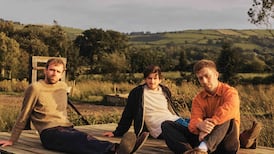The Bergen Philharmonic Orchestra, which made its Irish debut at the National Concert Hall on Friday, claims to be “one of the world’s oldest orchestras”. It’s also Norway’s oldest, founded when Mozart was just nine, and is celebrating its 250th anniversary this year.
This certainly puts any British claimants in the shade. Manchester’s Hallé Orchestra and the Royal Liverpool Philharmonic Orchestra have both laid claim to being Britain’s longest-established surviving orchestras. In 2011 the matter was even ruled on by the UK’s Advertising Standards Authority after it received a complaint about the Hallé’s marketing material.
The Hallé was founded in 1858, but the Liverpool Philharmonic Society, the forerunner of the Royal Liverpool, was founded in 1840, and the orchestral players were contracted from 1851 onwards. Liverpool 1, Manchester 0. The Royal Liverpool is of the same kind of vintage as the Vienna and New York philharmonics, which were both founded in 1842.
There were, of course, other early orchestras. The claims and counter-claims are being made only by the ones that have survived. The ever resourceful Norman Lebrecht has offered a list of survivors that begins with the Royal Danish Orchestra (which traces its origins back to a group of trumpeters from 1448), the Weimar Hofkapelle, the Kassel Hofkapelle, the Kungliga Hovkapellet in Stockholm (the orchestra of the Royal Swedish Opera) and on up to the Gewandhausorchester in Leipzig, founded in 1743, although its roots stretch back to 1479.
A fuzzy idea
It’s a very fuzzy area. You have to wonder at the idea of orchestras being in existence before there was any actual orchestral music for them to play. I don’t think there’s an orchestra anywhere in the world today that resurrects works from the 15th century to explore or celebrate the earliest instances of orchestral music. The identities of the first real orchestra – and indeed the first real orchestral music – may never be known.
One of the conventional distinctions between an orchestra and an ensemble is that in an ensemble each part is played by a single musician, whereas in an orchestra there are a number of players to many of the parts. It’s fascinating that in the field of early music the conception of the orchestra has been shrinking over the last half century or so, with many “orchestral” works now often played one to a part. The concerts of the Irish Baroque Orchestra and Camerata Kilkenny are regular cases in point.
But back to Bergen, where, in the 19th century, the city produced two world-class musicians: violinist and composer Ole Bull (1810-1880), who had a glittering career and rivalled Paganini; and the great Edvard Grieg (1843-1907), who was for a period, 1880-1882, actually the director of the Musikselskabet Harmonien, as the Bergen orchestra was known until the mid-1980s.
Grieg left his papers to the public library in Bergen, and the online digital collection allows you to look at and sometimes download musical manuscripts, correspondence (there are letters to Tralee-born composer Arthur O'Leary), diaries, drawings and photos. The library also has a digital collection relating to Bull. Not far out of the town is Grieg's villa, Troldhaugen, now a museum with the composer's Steinway piano and, isolated from the house, the small hut Grieg used for composing.
Grieg, of course, is a staple of the Bergen Philharmonic. The orchestra was the first to record, back in 1981, the youthful Symphony in C minor, which the composer had suppressed, and later became the first Norwegian orchestra to record all of his orchestral music.
But at the National Concert Hall on Friday he featured only in one of the encores, the playing beautifully judged in the rise and fall of Åse's Death from the first Peer Gynt Suite. The evening's featured Norwegian composer was one of Grieg's contemporaries, Johan Svendsen, whose exuberant Carnival in Paris showed a sharper ear for orchestration than Grieg but a weaker melodic gift.
Russian violinist Alina Ibragimova, a regular visitor to Ireland, was the fleet soloist in Mendelssohn's Violin Concerto. This is one of those concertos that always sounds best when the virtuosity seems incidental rather than central to the music-making. Ibragimova delighted the audience with the freshness of her light-touch music-making.
The evening's big work was Stravinsky's Rite of Spring, which conductor Andrew Litton conveyed as a rich, full-on orchestral showpiece, a series of spectacular tableaux. The Bergen players responded to the musical workout with focus and precision, and even though Litton steered away from the essential rawness in the music, the playing was still full of character.
Live streaming
If you missed the concert, you can still check out the orchestra’s work online, where its Digital Concert Hall offers live-streaming of concerts and playback of an edited version for a further 30 days.
One of the works that is currently available is Grieg’s C minor Symphony conducted by Neeme Järvi. If you have never come across a hearwig, give this video a look. You’ll spot a number of them about 40 seconds in. Hearwigs are a form of ear protection that seem to be in favour with Scandinavian wind players. Without interrupting their music-making, players can ease their heads back into an enclosure that protects their ears from damaging blasts from timpani or heavy brass. It’s an in interesting alternative to the Pyrex sheets favoured by the RTÉ NSO.
- mdervan@irishtimes.com

















